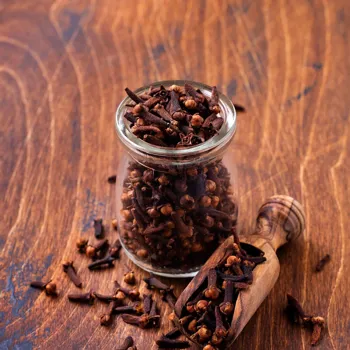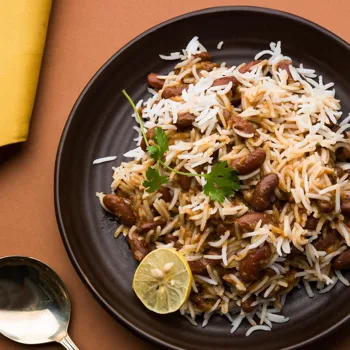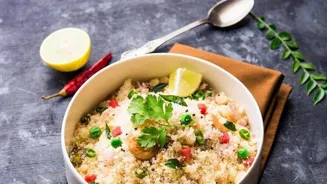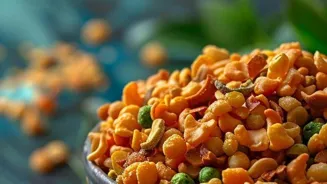Unveiling 7 Secrets to the Perfect Vegetable Biryani - a guide to biryani mastery! Dive in to elevate your culinary skills!
Secrets to a Perfect Vegetable Biryani That Everyone Will Beg You For!

Bangalore
Vegetable Biryani. Just the name conjures up images of fragrant rice, colorful vegetables, and a taste that’s simply divine. It’s a staple at Indian weddings, festive occasions, and even a comforting weeknight meal.
But let's be honest, achieving that restaurant-like perfection at home can sometimes feel like climbing Mount Everest. Fear not, foodie friends! We're about to unlock the seven secret ingredients and techniques that will transform your vegetable biryani from good to absolutely legendary.
Your family and friends will be lining up, begging for your recipe! So, ditch those bland, boring biryanis and get ready to create a symphony of flavors that will tantalize taste buds and earn you the title of "Biryani Boss"!
Get ready as we reveal the key components for creating the biryani of your dreams!
Select Basmati rice, fresh veggies, and spices for perfect vegetable biryani
The first hurdle in any culinary endeavor is selecting the right ingredients. When it comes to vegetable biryani, the quality of your rice is paramount. Opt for long-grain Basmati rice, known for its delicate aroma and fluffy texture.
Don't even think about using regular rice; it will clump up and ruin the whole experience and end result! Soak the rice for at least 30 minutes before cooking; this allows the grains to absorb moisture, resulting in a longer, more separated grain after cooking.
Next, choose a colorful array of fresh vegetables; carrots, peas, beans, potatoes, cauliflower, and bell peppers are all excellent choices. The more variety you have, the more visually appealing and nutritionally rich your biryani will be.
Ensure that the vegetables are fresh and crisp and dice them evenly so they will cook uniformly.
Finally, gather your spices: bay leaves, cardamom pods (both green and black), cloves, cinnamon sticks, cumin seeds, coriander powder, turmeric powder, red chili powder (or green chilies for a milder flavor), ginger-garlic paste, and saffron strands are the essentials that will impart that characteristic biryani aroma and depth of flavor.
Achieve perfect balance between vegetables and rice for fluffy biryani
The secret lies within achieving the perfect balance between the vegetables themselves and the rice to ensure it is fluffy and the vegetables are not overcooked or undercooked. The key is to partially precook your vegetables.
This will shorten the cooking time later and prevent them from becoming mushy during the layering process. A quick sauté with a little oil and some of the spice mixture is all it takes. Overcooking the vegetables at this stage is catastrophic; you want them to retain some bite.
While the vegetables are cooking, prepare the rice separately. There are two methods for cooking rice: the absorption method and the draining method.
The absorption method involves cooking the rice with a specific amount of water, allowing it to absorb all the moisture, while the draining method involves cooking the rice in excess water, then draining it once it's partially cooked.
For biryani, the draining method is generally preferred as it allows for better control over the rice's texture. Cook the rice until it's about 70% done; it should still have a slight bite in the center. Remember, it will continue to cook during the layering process.
Creating the soul of biryani with dum cooking technique
Creating the "dum" of a biryani is the soul of the dish that ensures each fragrant grain of rice is infused with the rich flavor of the vegetables. And don't be intimidated!
Dum cooking is a slow-cooking technique where the biryani is cooked in a sealed pot over low heat which allows the steam to circulate and cook the ingredients evenly, resulting in a melt-in-your-mouth texture and intense flavor.
You can use a heavy-bottomed pot with a tight-fitting lid, and even better, seal the lid with dough to prevent any steam from escaping. Now for the layering!
Start with a layer of rice at the bottom of the pot, followed by a layer of vegetables, then sprinkle with fried onions (birista), chopped cilantro, and a drizzle of saffron-infused milk. Repeat the layers until all the rice and vegetables are used up, finishing with a layer of rice on top.
The saffron milk is crucial; it adds a beautiful color and subtle floral aroma to the biryani. Cover the pot tightly with the lid and either place it on a low flame or transfer it to preheated oven (around 180 degree C) for 20 - 25 minutes. Resist the urge to open the lid during this time!
Enhance biryani with aromatic spices, birista, infused ghee, fresh herbs, and a hint of sugar
A biryani is only as good as its aromatic presence. And the secret to a truly "wow" aroma is the smart use of spices and aromatics. For a deeper, more complex flavor profile, try adding a touch of "birista" which is slowly fried onions until golden brown and crispy to your spice mixture.

Birista adds a sweet, caramelized flavor that complements the spices beautifully. Another pro tip is to infuse your ghee (clarified butter) with whole spices before adding it to the biryani.
Heat ghee on low heat with cardamom pods, cloves, and cinnamon sticks for a few minutes, allowing it to absorb all the fragrant oils. Strain the ghee and use this infused ghee for both sautéing the vegetables and drizzling over the layering process. Don't forget the fresh herbs!
Chopped cilantro and mint are essential for adding a fresh, vibrant flavor to the biryani. Sprinkle generously over each layer and as a garnish before serving. And lastly, a secret ingredient that many home cooks overlook: a pinch of sugar. Just a tiny pinch of sugar added to the spice mixture.
Biryani accompaniments add flavor and balance
No biryani is complete without the perfect accompaniments. Raita of a combination of yoghurt, cucumber, coriander and a blend of spices is the perfect cooling counterpoint to the richness of the biryani. It helps to balance the flavors and adds a refreshing element to the meal.

A simple onion raita or a vegetable raita work wonders. Another popular accompaniment is mirchi ka salan, a spicy and tangy chili curry. The contrasting flavors of the biryani and the salan create a delightful explosion of taste in your mouth.
You can also serve your biryani with papads or pickles for added crunch and tang. When it comes to serving, remember presentation is key. Gently fluff the biryani with a fork, being careful not to mash the rice. Garnish with fresh cilantro, fried onions, and a drizzle of saffron milk.
Serve hot and watch as your guests devour every last grain of rice! Don't forget to accept the compliments gracefully! You've earned them!
Master the secrets to perfect vegetable biryani creation
Making the perfect vegetable biryani may seem like a daunting task, but with these seven secrets, you'll be well on your way to biryani stardom.
Remember to use high-quality ingredients, perfect pre-cooking the vegetables and also the rice, master the dum technique, spice infuse your ingredients well to ensure there are no bland tastes, and create the wow factor by adding sugar, herbs, raita and other accompaniments.
And most importantly, don't be afraid to experiment and find your own unique twist on this classic dish. So put on your chef's hat, gather your ingredients, and get ready to create the vegetable biryani that everyone will be begging you for! Remember, cooking is an art, and practice makes perfect.
The more you experiment, the better you'll become at creating the perfect biryani for your taste buds and your loved ones. Good luck, and happy cooking!
AI Generated Content. Glance/InMobi shall have no liability for the content









